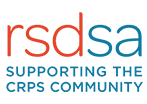Ehlers-Danlos Syndrome (EDS) is a group of inherited connective tissue disorders that affect the body’s ability to produce strong collagen—a critical protein that provides structure and support to skin, joints, blood vessels, and organs. People with EDS sometimes experience joint hypermobility, frequent dislocations, fragile skin that bruises easily, and chronic pain. But the impact can go much deeper, often disrupting the autonomic nervous system, digestive function, and even causing fatigue or neurological symptoms. At our clinic, we view EDS not just as a structural condition, but as part of a larger dysfunction in the central nervous system. That’s why our approach focuses on restoring neurological balance and addressing the root causes of these widespread symptoms—rather than simply managing them.
The most typical signs and symptoms of hypermobile EDS are the following:
Vascular Ehlers-Danlos syndrome is the most common for people who have it in their family history, and the inheritance of this disease is autosomal dominant. People who suffer from it usually have a typical facial appearance, including a thin upper lip, prominent eyes, sunken cheeks, a thin nose, and small earlobes. What is more, they have very fragile blood vessels that sometimes can be clearly visible through the skin (especially on the upper chest and legs). As a result, their skin tends to bruise exceptionally easily.
We have found that for some EDS symptoms to express itself, dysautonomia has to be present. For example, a healthy balanced EDS patient may always be very flexible. They do NOT have to accept a life sentence of chronic pain, however. Dysautonomia is a malfunction (or imbalance) in the Autonomic Nervous System. This is the system that controls your body without you having to consciously think about it. An easy example is taking a walk. Deciding to take a walk is a conscious thought. That is the motor part of the nervous system that we control. However, when our heart rate speeds up while we are walking and our blood pressure rises in order to deal with the demand of oxygen by our muscles, that is the Autonomic Nervous system at work. Our skills lie in bringing balance and strength to the patient’s central nervous system, with a special emphasis on the autonomic nervous system.
Hypermobile Ehlers-Danlos Syndrome (hEDS) is one of the most challenging conditions to diagnose, and here’s why: there’s no genetic test for hEDS, and not everyone with the condition is hypermobile or shows “classic” symptoms.
However, after working with countless patients dealing with dysautonomia and suspected EDS, we’ve noticed some unmistakable patterns. One surprising clue? The activities you’re naturally drawn to. Gymnasts, dancers, cheerleaders, and ballerinas often have EDS. Male patients often have a natural athletic grace and excel in sports like baseball, swimming, or basketball. These patients are also more prone to chronic injuries from physical trauma—think falls or car accidents—and their recovery is often slower.
EDS patients are often the ones who react poorly to medications. If there’s a side effect or a weird reaction to be had, they’re likely to experience it. Many also report a history of frequent childhood illnesses, GI issues (bloating, acid reflux, IBS, gastroparesis), and food sensitivities.
EDS patients commonly suffer from Mast Cell Activation Syndrome (MCAS). This condition makes mast cells hypersensitive, leading to exaggerated immune responses like histamine release that trigger inflammation and discomfort. They’re also prone to Postural Orthostatic Tachycardia Syndrome (POTS), a condition where standing causes heart rate spikes due to autonomic nervous system dysfunction.
Put simply, EDS is more than a diagnosis—it’s a pattern of symptoms and experiences. And the better we understand these connections, the better equipped we are to help those with this complex condition.
Our treatment is focused on supporting the central nervous system and optimizing the body’s ability to heal from within. This inside-out healing approach results in a healthy body where these genetic variants are kept inside the box, unexpressed.
Locking the box takes time and must be attacked from many different angles. Over the years, we have introduced numerous tools and techniques in order to perfect our program and help our patients achieve healing.
Our approach is focused on nervous system rehabilitation consisting of:
“Perfectly normal genes can result in cancer or death. Vice-versa, in the right environment, mutant genes won’t be expressed”
Bruce Lipton



This book is for you. This book will explain many of your strange symptoms and how they may all be connected. It offers a whole-body approach to improve your health and return you to a better quality life. Finally, you will understand how your central nervous system is the way to healing, and have renewed hope.
Disclaimer: The information written on this website is designed to provide helpful information on various conditions and the subjects discussed. This website is not meant to be used to diagnose or treat any medical condition or to replace the advice of your physician(s). The author of this website does not claim to treat, diagnose or cure Long COVID, CRPS, EDS/POTS, AMPS, or any other specific condition or infection. The Spero Clinic treats the central nervous system only, often resulting in the body being able to heal itself.
You should regularly consult a physician in matters relating to your health, particularly with respect to any symptoms that may require diagnosis or medical attention. For diagnosis or treatment of any medical problem, consult your own physician(s).





























Start your patient journey with the Spero Clinic's neurologic rehabilitation program.
